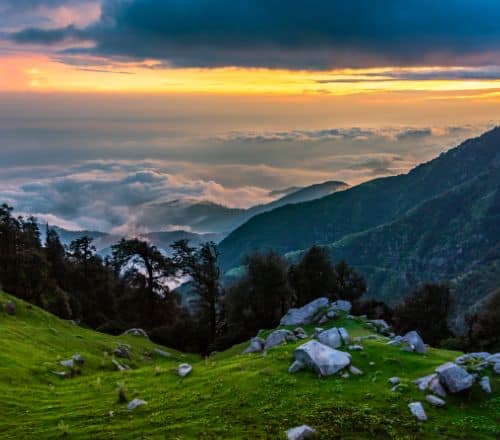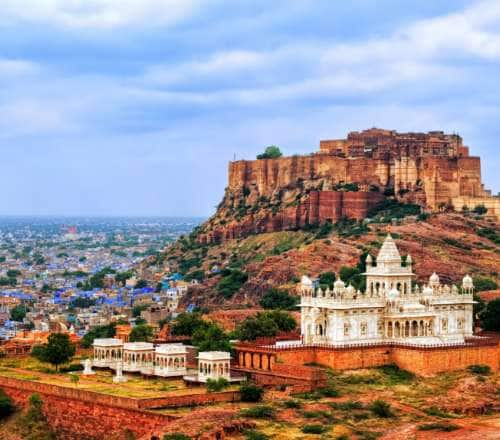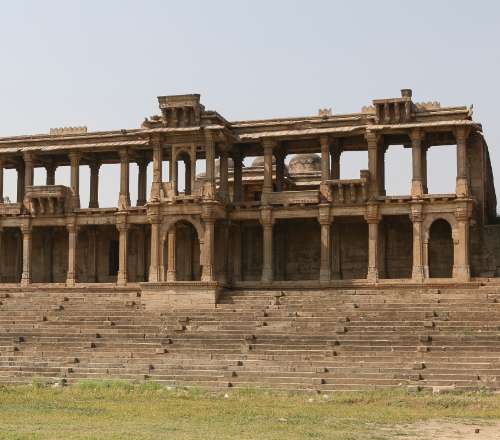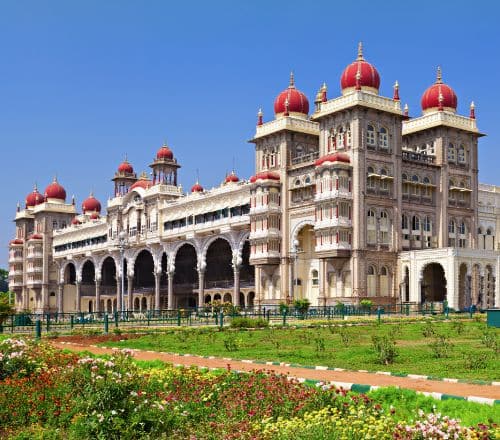Stay logged in to proceed with bookings, orders and offers.
On changing the terminal, you will loose items in your cart. Are you sure you want to change your terminal?
Experience the cultural richness of Tripura and uncover the mysteries of its past, including the stunning bas-reliefs of Unakoti.
I'm not sure how I learned about Unakoti. Maybe I saw it on social media. But, come to think of it, Unakoti is still not very well-known on social media. I've never seen an Instagram post about Unakoti. But the place continued to occupy my thoughts when I was planning a long trip to Northeast India.
Tripura is usually not on the itinerary of seasoned travellers, even those who enjoy exploring the unusual. When I think of Northeast India, I think of mountains, valleys, and ethnic tribes. Tripura is not typically included in this picture. Rather, it is the states of Sikkim, Meghalaya, and Arunachal Pradesh in the Northeast that are more popular among vacationers. Nagaland has recently been added to the bucket list of influencers.
Tripura on the other hand is far from glamorous. It is also quite far away geographically. The journey is quite long unless you take a flight from Kolkata to Agartala, the state capital. The superfast train from Delhi to Agartala takes about 40 hours. Guwahati, located in the heart of the Northeast, is also far from Tripura. The road trip from Guwahati to Agartala takes about 14 hours.
Tripura's terrain is more similar to that of West Bengal than its neighbouring hilly tribal states, such as Mizoram and Manipur. Tripura shares its border with Assam, a state primarily located in the Brahmaputra plains. However, the border region of Assam with Tripura is also hilly. So, with a long travel time and few popular options, how does Tripura get on the radar of travellers?
My sole reason for travelling to Tripura was to see Unakoti. However, during my visit to Tripura, I discovered that the state has several architectural marvels, which include Ujjayanta Palace, in Agartala, and Neermahal, in Melaghar.
I went to Tripura during a long vacation in the Northeast. I had previously visited Arunachal Pradesh and Assam. I caught a train from Lumding in Assam to Dharmanagar in Tripura. This stretch of railway in southern Assam traverses through hilly terrains. The world-famous site of Jatinga falls on the way. Jatinga made headlines when an incredible natural phenomenon of mass bird hara-kiri was discovered.
The train entered Barak Valley ahead of Jatinga. The valley offers a picturesque view of lily and lotus ponds hidden amid bamboo groves. The valley eventually gave way to the border of Tripura. Here, the rail route runs very close to the Bangladesh border. The demographic shift was quite noticeable. Some trains go up to Agartala, but mine went halfway across the state. I got off at Dharmanagar station and took a shared cab. The 160-km journey to Agartala from Dharmanagar took about three hours.
Once I reached Agartala, I visited Ujjayanta Palace which is a historic monument built by Maharaja Radha Kishore Manikya in 1901. After the demise of the Maharaja, the palace was taken over by the Tripura Government in 1972 and was converted into a museum.
The palace is a two-storeyed building and is constructed in the Indo-Saracenic style. It is surrounded by picturesque gardens and a lake, which adds to the beauty of the place. The palace has many grand gates and intricately carved domes that lend a distinct character to its architecture.
The palace has several galleries and halls which depict the culture, heritage and historical events of Tripura. The galleries include a library hall that holds a large collection of manuscripts and books. It also has a picture hall that exhibits portraits of the ruling family of Tripura. The museum also displays weapons and artefacts used by the royal family in the armour gallery.
The palace has many objects of international importance, like a piano which was once used by the royal family. It also houses many sculptures, paintings, and other works of art. The palace has been designated as a protected monument.
In the afternoon, I took a bus to Melaghar to visit the largest floating palace in India: Neermahal. Neermahal is a beautiful palace situated in the middle of Lake Rudrasagar. Built in 1930 by Maharaja Bir Bikram Kishore Manikya Bahadur, the palace is nothing short of an architectural marvel. It is a unique blend of Hindu and Muslim styles of architecture. The palace is an iconic symbol of Tripura's rich cultural heritage.
Neermahal is built on a stone base surrounded by the lake. It is a grand three-storeyed building, with a series of large halls. Notable among these is the Darbar Hall where important court proceedings would take place. The Zenana has a separate entrance and is equipped with an extensive library, a beautiful garden, and a luxurious swimming pool.
The palace also houses many other attractions, including a museum and a boat house, allowing visitors to explore the lake and its verdant surroundings
Finally, it was time to begin the journey for the flagship event of the tour. I took a shared cab to Kailashahar from Agartala in the evening. I might have reached Kailashar by 7:00 pm, but it was already quite late in the night. I found a decent place in the city centre. The staff told me that I would easily find a bus to Unakoti in the morning.
As early as 6:00 am, I found a bus from Kailashahar to Dharmanagar which dropped me right in front of the entrance to Unakoti.
Unakoti is an ancient archaeological site which is believed to be over 1000 years old. It is known for its intricate rock carvings, sculptures, and bas-reliefs.
Unakoti translates to less than a crore in Sanskrit. Legend has it that on his way to Kashi, Lord Shiva spent a night here accompanied by 99,99,999 gods and goddesses. This number was one less than a crore, hence the name Unakoti. Lord Shiva asked the gods and goddesses to wake up early to proceed on the journey ahead. But in the morning, it was only Lord Shiva who woke up on time, with the rest still asleep. This angered him and he cursed the others to be turned to stone. It is believed that this is how the bas-reliefs were thus formed.
The largest of the sculptures at Unakoti is the one that looks like the head of Lord Shiva. These sculptures are carved in the rock and are surrounded by many other sculptures of gods, goddesses, and animals. The sculptures are believed to date back to the 8th century.
The site is also home to several Hindu and Buddhist temples which were constructed during the medieval era. Unakoti has numerous caves, which are said to have been used by monks and ascetics for meditation and contemplation. These caves offer a glimpse into the region's ancient past.
Unakoti is best visited during the festivities of Ashokastami Mela in April. During Ashokastami, people visit the sacred river of the Ashtami Kunda to take a ritualistic bath. It is said that taking a dip in the holy water brings Divine grace and blessings. Unakoti is a popular location for the dip and there is an atmosphere of genuine devotion here as people participate in this spiritually significant event.
Interestingly, Unakoti is not maintained by the Archaeological Survey of India (ASI). Although the site is well-preserved, it feels surprising that the government hasn't taken the necessary efforts to preserve or celebrate it.
I went around the site taking photographs. By the time I was about to leave, a large number of people were already there. Unlike the morning when I was one of the few people here, I felt happy to see more visitors around the place. It was time for me to end my journey in Tripura and move to Mizoram. My trip to Tripura introduced me to some interesting and intriguing places that are not yet widely known. Tripura is one of the seven sister states that must be visited.





The Adani One expressly disclaims all liability, direct and indirect, in respect to actions taken or not taken based on any or all the contents of this Blog. The Blog is an opinion of the contributor based on the collation of data from various sources and is provided only for information purpose. Adani One does not canvass, advertise, solicit, invite or induct for any product, merchandise, information, brand or any other materials mentioned in the Blog, nor does it obtain any monetary benefit from the same. Reader is advised to read and apply his/her intellect and discretion in this regard. Any Intellectual Property mentioned in this blog belongs to the rightful owner. We do not intent to claim any interest over the same.